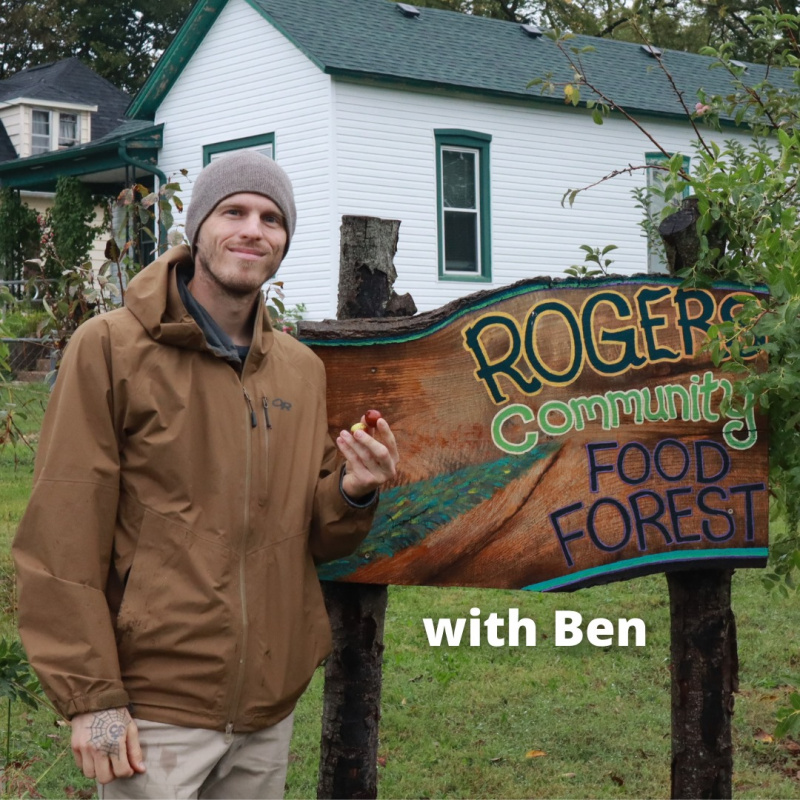Location
1436 N. Rogers Ave.
Timeline
The City of Springfield donated the lot where RCFF is now located. City of Springfield Associate Planner and garden volunteer Ben Tegeler began planting the site in 2018.
What is a food forest?
This site is different from Springfield Community Gardens’ other gardens – it’s not a garden at all! It’s a food forest, a “diverse planting of edible plants to mimic the ecosystems and patterns found in nature (PFF).” The goal is a self-sustaining site where people can grow food, and connect to the area’s natural history. In contrast with traditional community gardens, food forests focus on holistic resilience and biophilic design over managing and maintaining specific production areas. There are seven general layers in a food forest (check out this diagram from Project Food Forest):

Engaging multiple layers creates a more robust and resilient ecosystem and allows for more production across layers. Many food forests, like RCFF, begin by planting overstory (trees) that take two to five years before they start producing. RCFF is only a few years old and just now starting to produce!
Why food forests?
Knowledge from many disciplines including permaculture, arboriculture, ecology, microbiology, and natural history collaborate to focus on the land and natural systems already at work. No two food forests will look alike, because they are tailored to their region! Produce reflects what best grows in the region. RCFF currently hosts native and hearty apple, pear, persimmon, jujubee, pawpaw, hazelnut, cherry and mulberry cultivars with plans for future densification. Plan for plant communities, not individuals. Species from different forest layers provide shelter, shade, and nutrients to each other.
Final thoughts
Food forests allow growth and change with minimal interference after the initial “hard work” of site design and layout, soil testing, cultivar choice, and planting are completed. They can last for generations, growing communities along with their produce. Follow our social media for updates on this site! To learn more about what Ben does, check out Ozark Mountain Permaculture.





